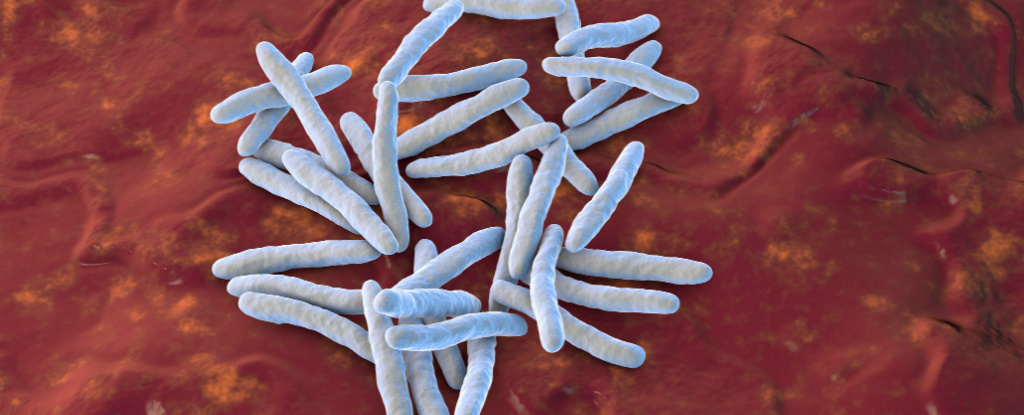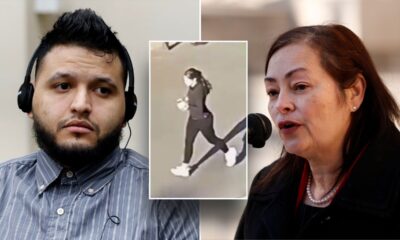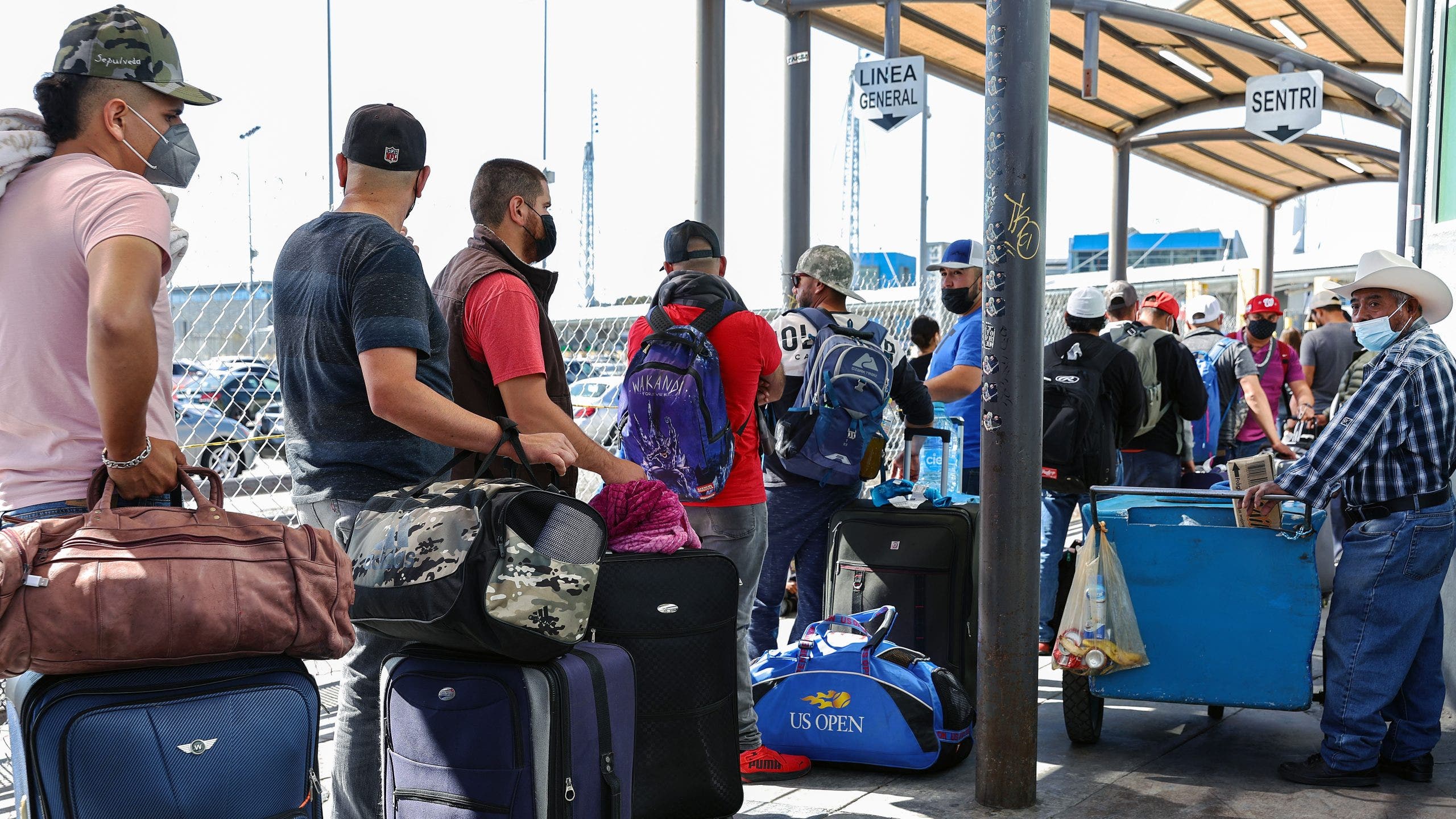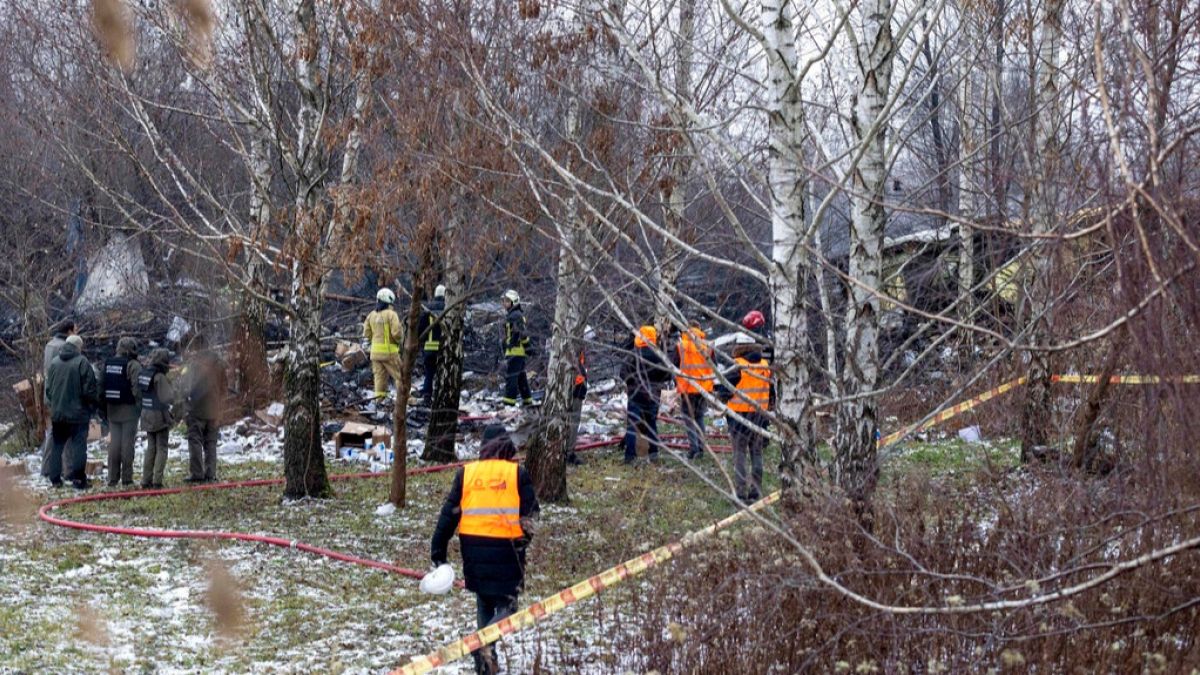Florida
Leprosy Is on The Rise in Florida, Scientists Report

A 54-year-old Florida man diagnosed with leprosy in a case report published this year added to a growing number of cases detected in the south-eastern United States in recent times, which appears to be a new hotspot for the disease.
It follows recent alerts from the US Centers for Disease Control and Prevention (CDC) of the first cases of locally-acquired malaria in the US in two decades; four of which were in Florida.
Leprosy incidence, or rates of new leprosy cases, has been increasing in southern parts of the US since 2000, with reported cases more than doubling in south-eastern states over the past decade. Central Florida now accounts for almost one-fifth of US cases.
Yet a shrinking proportion of US leprosy cases are diagnosed in people born outside the country, while a growing number of reported cases appear to lack any of the typical risk factors of the disease.
“Those trends,” wrote the three dermatologists who alerted public health officials to the Florida man’s diagnosis, “contribute to rising evidence that leprosy has become endemic in the south-eastern United States.”
Leprosy, also known as Hansen’s disease, is a bacterial infection caused by Mycobacterium leprae and the more recently discovered M. lepromatosis. It is a curable yet neglected tropical disease, entirely treatable with the right care, but nonetheless a disease that still occurs in more than 120 countries.
About 150 cases of leprosy are reported in the US each year. Unique strains of M. leprae have been detected in US patients, though most cases are people who have traveled from countries where leprosy is present or endemic.
Other risk factors, according to the researchers, include exposure to animals such as nine-banded armadillos, which are known to harbor M. leprae, and prolonged, close contact over months with someone who has untreated leprosy, which is spread via droplets from the nose and mouth.
But the 54-year-old man, a lifelong Florida resident, told contact tracers he had not been traveling, nor come into contact with someone known to have leprosy or any armadillos. He works as a landscaper though, spending much time outdoors.
The man presented to a dermatology clinic with a painful rash and skin lesions that first appeared on his feet and arms, but then progressed to his trunk and face.
Biopsies confirmed a diagnosis of leprosy, and public health officials were alerted, according to national protocols.
The man’s case, like roughly one-third of new leprosy cases diagnosed in the US between 2015 and 2020, appears to have been locally acquired.
“Our case adds to the growing body of literature suggesting that central Florida represents an endemic location for leprosy,” dermatologists Aashni Bhukhan, Charles Dunn, and Rajiv Nathoo wrote in their case report, published in August.
“By increasing local physician efforts to report incidence and supporting further research to assess routes of transmission, a congruent effort can be made to identify and reduce spread of the disease.”
In particular, the absence of known risk factors in this and other recent cases of leprosy in Florida, in people spending time outdoors, has researchers wanting to investigate possible environmental reservoirs of the bacterial disease.
“The transmission of this disease is probably much more complicated than was thought before,” write the authors of a recent systematic review, which analyzed global leprosy transmission data published between 1945 and 2019.
It supports an increasing role of anthroponotic (human-to-human) and zoonotic (animal-to-human) transmission of leprosy.
The second known causative agent of leprosy, M. lepromatosis, was only identified in 2008, 150 years after the disease was first attributed to M. leprae.
Researchers are trying to understand the prevalence of M. lepromatosis infections and from which animals it spills over into humans.
“It is perhaps remarkable that a new [bacterial] species causing an endemic disease of major public health impact has not prompted larger-scale studies to determine its true prevalence,” researchers remark.
The Florida case report has been published in Emerging Infectious Diseases.
An earlier version of this article was published in August 2023.

Florida
South Florida Weather for Tuesday 11/26/2024 12PM

Watch CBS News
Be the first to know
Get browser notifications for breaking news, live events, and exclusive reporting.
Florida
How Florida football and Ron Zook spoiled the Bobby Bowden Field dedication 20 years ago
Swampcast talks Florida football hosting No. 9 Ole Miss at The Swamp
The Sun’s Kevin Brockway and David Whitley break down the Florida football-Ole Miss matchup with Sam Hutchens of the Jackson Clarion-Ledger
More than 20 years ago, on Nov. 20, 2004, Florida football rolled into Tallahassee with a lame duck coach and weary team, eager to avenge a loss to rival Florida State from the season before.
What happened on the night that Florida State dedicated the field legendary coach Bobby Bowden inside of Doak Campbell Stadium was surprising to all except those who wore Florida Gators uniforms that day.
Florida coach Ron Zook had been fired close to two months earlier following a 38-31 loss to Mississippi State, but stayed to coach the team the remainder of the 2004 season while former athletic director Jeremy Foley pursued potential candidates.
Zook wasn’t going to coach the bowl game, so this was going to be his last time patrolling the sidelines for UF.
“It meant a lot to us,” former Florida cornerback Dee Webb said. “We wanted to send him out on a winning note.”
Florida jumped to an early 10-point lead and held on to upset the No. 10 Seminoles 20-13, spoiling Bowden’s honorary night. Florida fans still delight in calling Doak Campbell Stadium “Ron Zook Field.”
Players carried Zook off the field on their shoulders following the game.
“It’s something you appreciate,” said Zook, who remains in coaching as a special teams analyst at Maryland. “But it was just the players and the coaching staff and everyone putting in the hard work. I just happened to be the guy who got picked up.”
A rocky third season for Florida football coach Ron Zook
Zook faced a monumental task replacing icon Florida football coach Steve Spurrier, who led UF to six SEC titles and the school’s first national title in 1996. Foley hired him for his recruiting acumen even though he entered the job with no college football head coaching experience.
After going 8-5 in 2002 and 2003, Zook entered 2004 squarely on the hot seat. When Florida dropped to 4-3 following a 38-31 upset loss at Mississippi State, Foley fired Zook, who agreed to stay on and coach the team rather than have UF turn the program over to an interim coach on his staff.
“It wasn’t normal from the morning after the Mississippi State game,” Zook said. “We had been a young team and we hadn’t always won, but what helped them as freshman and sophomores is that they were able to grow up and learn to deal with adversity. I think that’s a tribute to the guys.”
Indeed, after Florida lost 31-24 to rival Georgia in Jacksonville, the Gators won two straight, beating Vanderbilt 34-17 and routing South Carolina 48-14 at The Swamp before its showdown with the Seminoles.
Florida looked to avenge a 38-34 loss to FSU at The Swamp the season before, a game decided on a handful of controversial calls by officials.
“We felt like we could play with anybody,” Webb said. “Our freshman class, go back to our first year there (in 2003), we were the only team that beat LSU that year and they went on to win a national championship, probably 40 percent of them played as true freshman. It was all about being consistent.”
How Florida football upset FSU
Former Florida running Ciatrick Fason, who rushed for 103 yards and a touchdown in the win, said players didn’t know they were honoring the field for Bowden until they got to the game. Bowden, then 75, was still coaching the Seminoles in his 28th season after leading FSU to national titles in 1993 and 1999.
“I had a pretty good relationship with Coach Bowden,” Zook said. “It was Florida, Florida State so it was always a rivalry game. The crowd was pretty hostile.”
Still, choosing to honor Bowden for the Florida-FSU game didn’t sit well with Fason and the rest of his teammates.
“We’re still the University of Florida,” Fason said. “If they were going to try a team it should have been against one of them ACC schools or something, but not us. So that was our motivation, hey, we’re fixing to spoil the moment.”
Fason recalled knocking an FSU defensive back out of the game as the ‘Noles’ defender tried tackling him early in the game after he caught a screen pass. Still, the wear and tear of leading the SEC in rushing (1,267 yards on 222 carries) led to a foot injury that slowed Fason in the first half. Fason got a shot from a trainer pregame.
“Once that medicine kicked in, that second half, man, I felt like my normal self,” Fason said. “One thing I know about myself is, I run hard. Because I hear the defenders tell me how hard I run, and I heard Florida State defenders saying, he ain’t slowing down. That kept motivating me.”
Florida built a 10-3 lead at halftime as its defense shut down the Seminoles and strong-armed quarterback Chris Rix in the first half. Webb recalled going across the field to make one of his two pass breakups in the game.
“That was one of the games where I just had a knack for the ball,” Webb said.
Fason rushed for an 8-yard touchdown to put Florida up 20-10 with 4:59 remaining in the fourth quarter.
As a Jacksonville native, Fason said he grew up dreaming of scoring in the Florida-FSU game.
“No matter what team I was playing for I wanted to score a game-winning touchdown in that game,” Fason said.
After an FSU field goal cut Florida’s lead to 20-13, Zook took a gamble, going for it on 4th-and-inches from his own 26-yard line with 2:35 to play. Chris Leak got the first down for Florida on a quarterback keeper, and UF was able to run enough clock out to preserve the win.
The aftermath of the Florida football upset of FSU
After getting carried off the field, Zook wanted to take a picture of the scoreboard.
“They turned the scoreboard off, like, a minute after the game,” Zook said. “I was with my brother trying to get a picture and we couldn’t get a picture of the final score”
Zook gave players the option to return with the team on the bus or stay in Tallahassee overnight if they had friends there. Webb chose to stay in Tallahassee with his close friend, former Florida safety Kyle Jackson.
“Kyle Jackson, he’s actually married to his high school girlfriend and she went to Florida State at the time,” Webb said. “Her friends and were cheerleaders so we partied with them.”
The players who chose to return on the bus were greeted by Florida fans in the predawn hours at The Swamp, who cheered at their arrival. A friend of Zook’s opened Ballyhoo’s, a restaurant in Gainesville, for a postgame celebration.
“Our guys were able to get some food and refreshments,” Zook said.
Charlie Strong served as the interim coach for Florida at the Peach Bowl in Atlanta, where the Gators lost 27-10 to Miami. Foley hired Urban Meyer from Utah, who led Florida to national titles in 2006 and 2008.
Of the 22 starters on UF’s 2006 national team, 18 were players that Zook recruited.
“Coach Zook, he didn’t get a fair shot,” said Webb, who played under Meyer in 2005 before declaring for the NFL Draft. “Had he stayed, we would have gotten two (national titles).”
Zook was hired by Illinois in 2005, where he led the Illini to the Rose Bowl in 2007 but was fired after going 34-51 in seven seasons. Now 70, Zook is working at Maryland under head coach Mike Locksley, who was his running backs coach at UF in 2004.
“It wasn’t the smoothest three years but I still think that coaching at Florida is the best job in America,” Zook said. “I learned a lot about life, how to deal with people.”
Webb played two years in the NFL with the Jacksonville Jaguars and remained in pro football in the CFL and arena leagues until 2015. He’s still involved in football providing lessons for high school players in player development.
Fason played three seasons in the NFL with the Minnesota Vikings (2005-06) and Jaguars (2008). He’s remained in his native Jacksonville as the football coach at Fletcher High School, channeling the lessons he learned from Zook, Locksley and former UF offensive coordinator Larry Fedora.
“Those three guys were amazing to me and it definitely helped me in high school,” Fason said. “I learned how to recruit, to help get kids into college on the recruiting side …
“I still reach out to all three of them every once in a while, just to see how they’re doing, and you know to get an update on things or get coaching tips. I really appreciate those guys for the rest of my life.”
Kevin Brockway is The Gainesville Sun’s Florida beat writer. Contact him at kbrockway@gannett.com. Follow him on X @KevinBrockwayG1
Florida
Florida woman sentenced to 25 years in prison for shooting neighbor

A white Florida woman who fatally shot a Black neighbor through her front door during an ongoing dispute over the neighbor’s boisterous children was sentenced Monday to 25 years in prison for her manslaughter conviction.
Susan Lorincz, 60, was convicted in August of killing 35-year-old Ajike “A.J.” Owens by firing a single shot from her .380-caliber handgun in June 2023.
The shooting was the culmination of a long-running argument between the two neighbors over Owens’ children playing in a grassy area near both of their houses in Ocala, about 80 miles (130 kilometers) northwest of Orlando.
Prosecutors said Owens had come to Lorincz’s home after her children complained that she had thrown roller skates and an umbrella at them, which Lorincz denied. Trial testimony showed Owens, a mother of four young children, was pounding on Lorincz’s door and yelling, leading Lorincz to claim self-defense in shooting her neighbor.
Lorincz told detectives in a videotaped interview that she feared for her life. She also said she had been harassed for most of the three years she lived in the neighborhood.
“I thought I was in imminent danger,” she said.
Jurors did not agree with her self-defense claim.
Owens’ family pushed for the maximum prison sentence after Lorincz was convicted by an all-white jury.
“While the pain of losing Ajike, we are hopeful that justice will prevail and that the court will give Susan Lorincz the maximum penalty for her actions,” said Owens’ mother, Pamela Dias, in an email statement before Monday’s sentencing. “Ajike’s legacy will live on through her children, and we will continue to fight for justice.”
Lorincz’s attorney, Assistant Public Defender Amanda Sizemore, sought a more lenient sentence, an unspecified term below the 11.5 years in prison that is the lowest for her crime under state guidelines. Sizemore said in court documents that there are several reasons to justify a downward departure, including a mental disorder and claims that Owens was the aggressor and under “extreme duress” during the confrontation.
There were protests in the Black community in Ocala when prosecutors took weeks to charge Lorincz with manslaughter, a lesser count than second-degree murder, which carries a potential life prison sentence. Marion County, which includes Ocala, has a Black population of about 12%, according to census figures.
-

 Business1 week ago
Business1 week agoColumn: Molly White's message for journalists going freelance — be ready for the pitfalls
-

 Science7 days ago
Science7 days agoTrump nominates Dr. Oz to head Medicare and Medicaid and help take on 'illness industrial complex'
-

 Politics1 week ago
Politics1 week agoTrump taps FCC member Brendan Carr to lead agency: 'Warrior for Free Speech'
-
/cdn.vox-cdn.com/uploads/chorus_asset/file/25739950/247386_Elon_Musk_Open_AI_CVirginia.jpg)
/cdn.vox-cdn.com/uploads/chorus_asset/file/25739950/247386_Elon_Musk_Open_AI_CVirginia.jpg) Technology1 week ago
Technology1 week agoInside Elon Musk’s messy breakup with OpenAI
-

 Lifestyle1 week ago
Lifestyle1 week agoSome in the U.S. farm industry are alarmed by Trump's embrace of RFK Jr. and tariffs
-

 World1 week ago
World1 week agoProtesters in Slovakia rally against Robert Fico’s populist government
-

 Health3 days ago
Health3 days agoHoliday gatherings can lead to stress eating: Try these 5 tips to control it
-

 News1 week ago
News1 week agoThey disagree about a lot, but these singers figure out how to stay in harmony




















